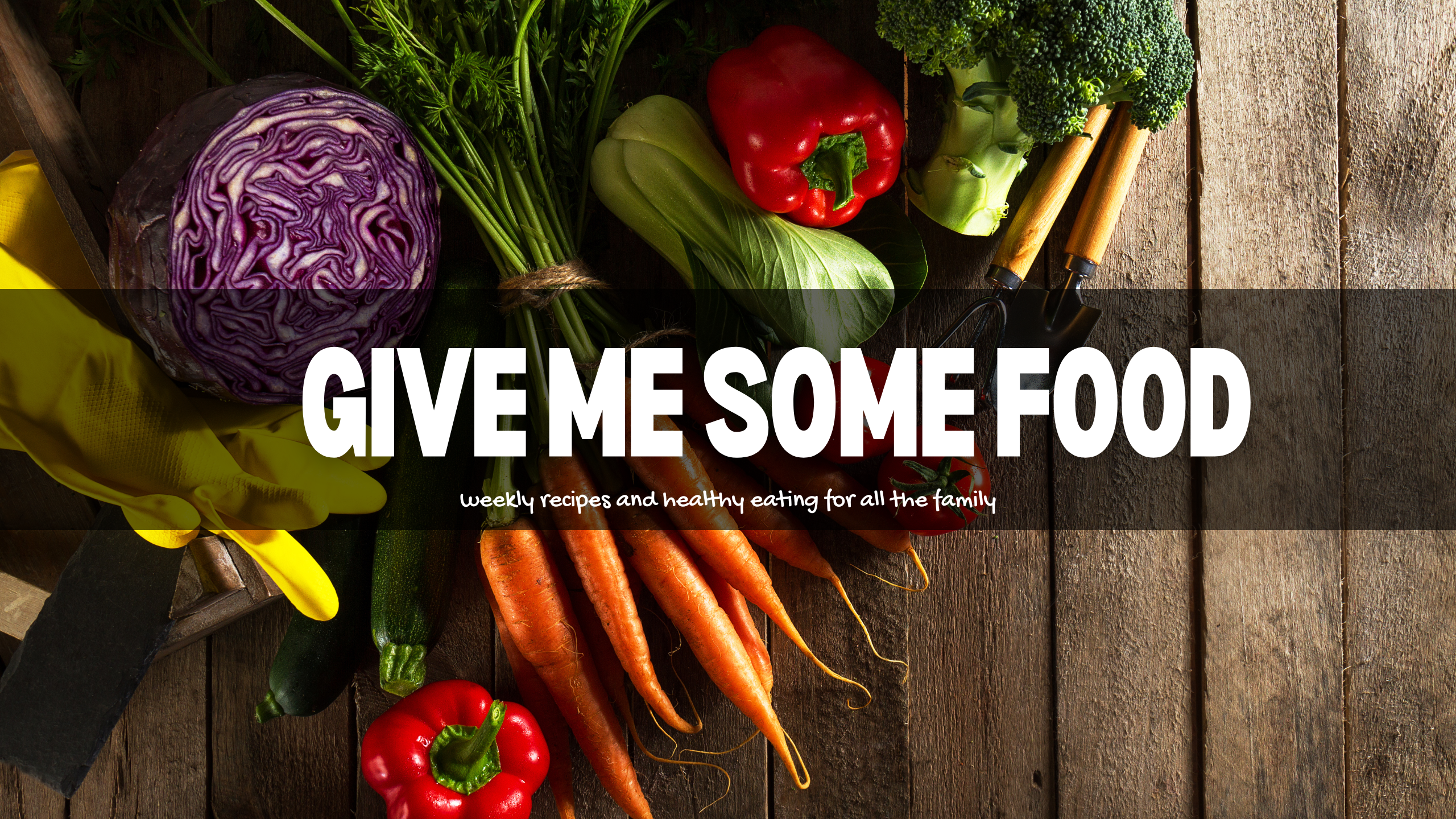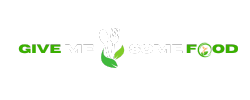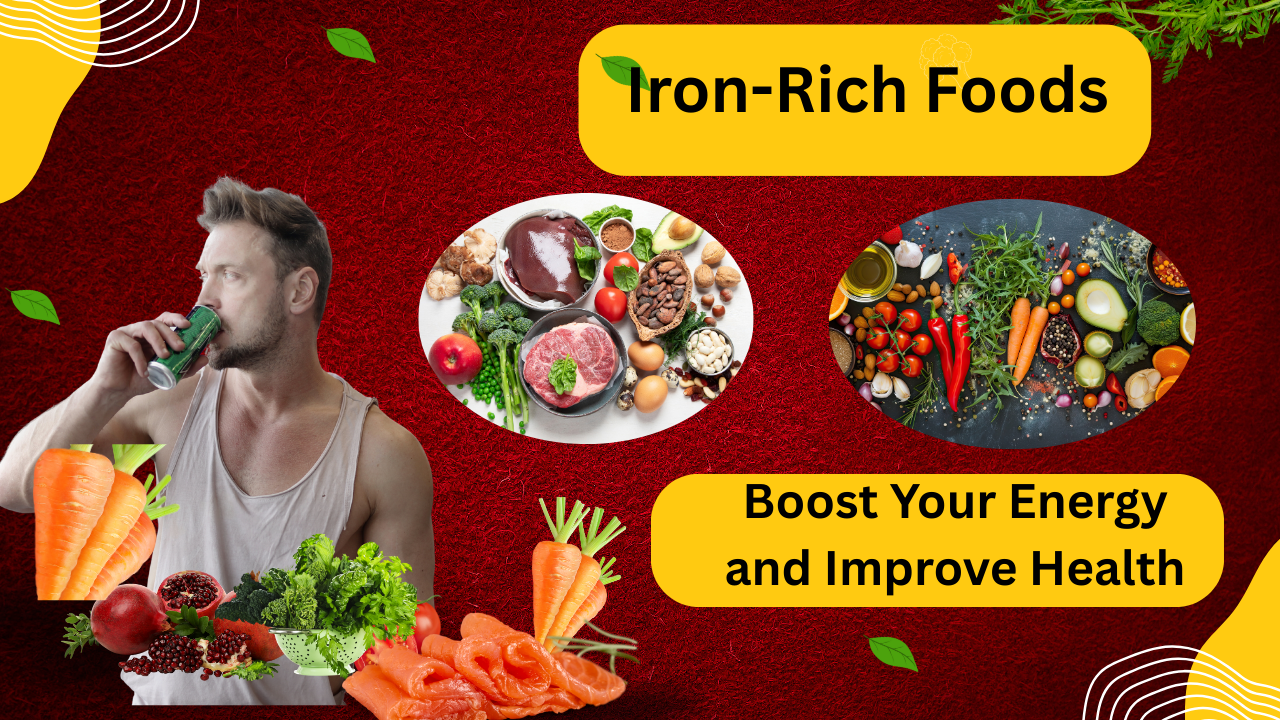Iron is a vital mineral that plays an essential role in maintaining our overall health and well-being. It is especially crucial for the production of hemoglobin, the protein in red blood cells that carries oxygen from the lungs to the rest of the body. When iron levels are adequate, your body functions optimally, ensuring proper oxygen delivery to tissues and organs.
Without sufficient iron, your body cannot produce enough healthy red blood cells, resulting in iron deficiency anemia. This condition can cause fatigue, weakness, shortness of breath, and difficulty concentrating. It can affect people of all ages, but it is especially common in women, children, and individuals with poor dietary habits.
To prevent iron deficiency, it is important to consume iron rich foods regularly. These include lean meats, poultry, seafood, lentils, beans, spinach, and iron-fortified cereals. Pairing these foods with vitamin C-rich fruits can enhance iron absorption and improve your overall energy levels.
In this complete guide, we’ll dive deep into the world of iron-rich foods, explain the importance of iron, list the best dietary sources, and share top tips to help you absorb more iron efficiently. Whether you’re a meat-eater, vegetarian, vegan, athlete, or someone just looking to improve your nutrition, this article has everything you need.
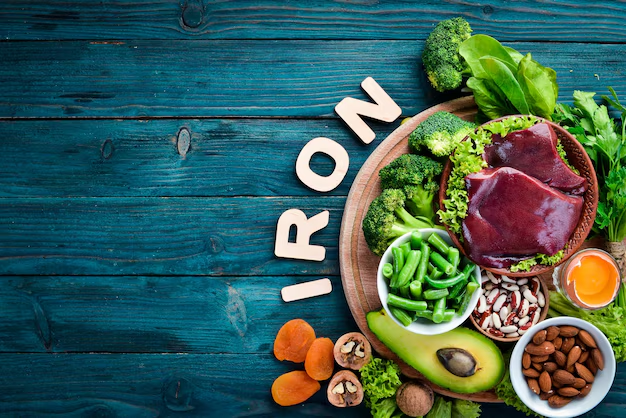
Why Iron Is Important for the Body
Iron plays a vital role in many bodily functions beyond just transporting oxygen. It is essential for energy production, supporting a healthy immune system, enhancing cognitive performance, aiding in muscle metabolism, and promoting proper growth and development—especially in children. Maintaining adequate iron levels is crucial for overall physical and mental well-being.
When the body lacks sufficient iron, these functions can become compromised. This can lead to symptoms such as constant fatigue, pale or dull skin, frequent headaches, cold hands and feet, shortness of breath, brittle nails, and poor concentration. These signs often indicate a deficiency that needs immediate attention.
Including iron rich foods in your daily diet is one of the best ways to prevent or correct an iron deficiency. Some excellent sources include red meat, leafy greens like spinach, lentils, beans, tofu, fortified cereals, and pumpkin seeds. These foods help ensure your body has the iron it needs to function properly.
Types of Iron: Heme vs Non-Heme Iron
There are two primary types of dietary iron:
Heme Iron
Heme iron is the form of iron found exclusively in animal-based iron rich foods such as red meat, liver, poultry, and seafood. Because it is already packaged within hemoglobin and myoglobin, the body absorbs it efficiently—about 15-35 percent of what you eat—making it the most readily available iron source for meeting daily needs.
Non-Heme Iron
Non-heme iron occurs in plant-based and dairy iron rich foods, including lentils, beans, spinach, fortified grains, nuts, seeds, and dairy products. Although your body absorbs only about 2-20 percent of this type, pairing these foods with vitamin C-rich choices like citrus fruits, bell peppers, or tomatoes can significantly improve absorption and help you reach your iron goals.
Iron Requirements by Age and Gender
| Group | Daily Iron Requirement |
| Infants (7-12 months) | 11 mg |
| Children (1-13 years) | 7-10 mg |
| Teen Boys (14-18 years) | 11 mg |
| Teen Girls (14-18 years) | 15 mg |
| Adult Men | 8 mg |
| Adult Women (19-50) | 18 mg |
| Pregnant Women | 27 mg |
| Postmenopausal Women | 8 mg |
Women generally need more iron due to menstrual blood loss, pregnancy, and breastfeeding.
Top Iron-Rich Foods (Both Heme and Non-Heme Sources)
Let’s explore some of the richest sources of iron to include in your diet:
Red Meat – A Leading Source of Heme Iron
Red meat, including beef, lamb, and pork, is one of the most reliable and efficient iron rich foods you can include in your diet. These meats contain heme iron, which the body absorbs more easily than plant-based (non-heme) iron. For instance, a 3-ounce portion of beef liver provides approximately 6.2 mg of iron, making it an exceptional choice. In addition to being rich in iron, red meat also delivers a substantial amount of high-quality protein, supporting muscle health and overall energy levels.
Shellfish – Nutrient-Packed Iron Boosters
Shellfish such as clams, oysters, and mussels are not only delicious but also some of the most potent iron rich foods available. Just 3 ounces of cooked clams can deliver a remarkable 23.8 mg of iron. These seafood options are rich in heme iron, allowing for optimal absorption. Furthermore, they offer a powerful nutritional punch by supplying essential nutrients like vitamin B12, zinc, and other minerals that support immunity and red blood cell production.
Legumes – Excellent Plant-Based Iron Sources
Legumes, including lentils, chickpeas, soybeans, and kidney beans, are among the top plant-based iron rich foods. A single cup of cooked lentils provides around 6.6 mg of non-heme iron. While the body absorbs non-heme iron less efficiently than heme iron, legumes compensate by offering a generous supply of dietary fiber, complex carbohydrates, and plant-based protein. They are especially valuable in vegetarian and vegan diets aiming to boost iron intake naturally.
Spinach and Leafy Greens – Nutritious Iron-Dense Plants
Dark leafy greens like spinach, kale, and Swiss chard are highly nutritious iron rich foods that support overall health. A half-cup serving of cooked spinach offers about 3.6 mg of non-heme iron, as well as important nutrients such as vitamin C, folate, and antioxidants. Vitamin C, in particular, aids in improving iron absorption, making spinach a great choice for increasing plant-based iron intake.
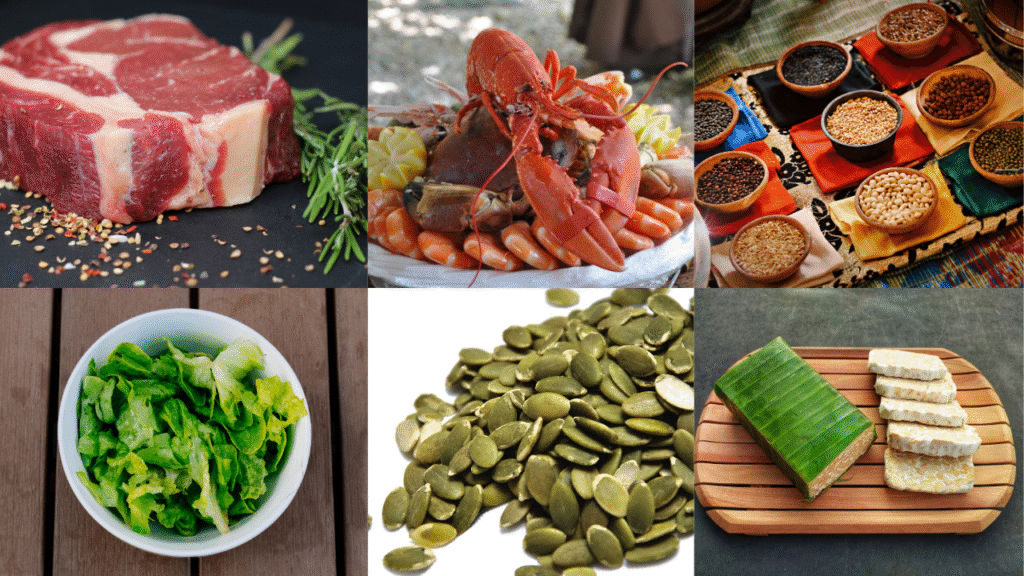
Fortified Cereals and Whole Grains – Convenient Iron Sources
Many breakfast cereals, oats, and other whole grains are fortified with iron, making them incredibly convenient iron rich foods for daily consumption. Some fortified cereals provide up to 100% of the recommended daily value of iron in a single serving. These products are especially helpful for individuals who have higher iron needs or who follow plant-based diets, as they offer an easy way to meet nutritional requirements with minimal preparation.
Pumpkin Seeds and Nuts – Compact Nutrient Powerhouses
Pumpkin seeds, almonds, cashews, and other nuts are compact yet effective iron rich foods that can easily be added to snacks or meals. A one-ounce serving of pumpkin seeds delivers around 2.5 mg of iron, along with essential minerals like magnesium and zinc. These nutrient-dense seeds also contain healthy fats and protein, contributing to heart health and sustained energy.
Tofu and Tempeh – Soy-Based Iron Alternatives
Tofu and tempeh, made from soybeans, are valuable plant-based iron rich foods that offer a wide range of health benefits. Half a cup of firm tofu provides approximately 3.4 mg of iron, along with calcium, magnesium, and a good dose of protein. These soy products are especially useful for vegetarians and vegans looking to maintain adequate iron levels through whole-food sources.
Dark Chocolate – A Delicious Way to Get Iron
Dark chocolate, particularly varieties with 70% to 85% cocoa content, is a surprisingly rich and indulgent source of iron. A one-ounce piece of dark chocolate contains about 3.3 mg of iron, qualifying it as one of the tastier iron rich foods. In addition to iron, dark chocolate offers magnesium, antioxidants, and flavonoids that support heart health and cognitive function.
Top Tips to Boost Iron Levels Naturally
To maximize your dietary iron intake, follow these practical and science-backed tips:
Pair Iron with Vitamin C
Pairing iron with vitamin C is a smart way to boost the absorption of non-heme iron found in plant-based iron rich foods. Vitamin C converts iron into a form that is easier for the body to absorb, helping you get the most from your meals.
For example, adding citrus fruits like oranges, strawberries, or bell peppers to meals with lentils, spinach, or tofu can significantly increase iron uptake. This simple habit can make a big difference, especially for people following vegetarian or vegan diets.
Combining iron rich foods with vitamin C-rich sources doesn’t require major effort—think of squeezing lemon juice over cooked greens, adding tomato slices to a bean salad, or having a glass of orange juice with fortified breakfast cereal. These small changes can help maintain healthy iron levels and prevent deficiencies over time.
Cook in Cast Iron Skillets
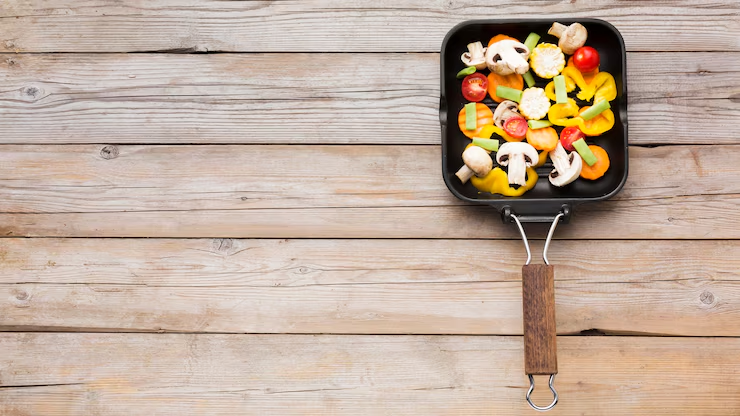
Cooking in cast iron skillets is an easy and natural way to increase your iron intake. When you prepare meals in cast iron cookware, a small amount of iron leaches into the food—especially when cooking acidic or moist dishes like tomato sauce or stews.
This method is particularly helpful for boosting the iron content of vegetarian meals that may lack heme iron sources. It can complement your intake of iron rich foods such as lentils, beans, or leafy greens, enhancing their nutritional value without extra effort.
While it won’t replace a diet full of iron rich foods, using cast iron cookware regularly can provide a helpful boost to your iron levels. It’s a simple, affordable strategy that benefits people of all ages, especially those at risk for iron deficiency.
Avoid Tea and Coffee Around Meals
Tea and coffee contain compounds called polyphenols and tannins, which can interfere with iron absorption. Drinking these beverages around mealtime can significantly reduce the body’s ability to absorb non-heme iron found in plant-based iron rich foods.
To get the most benefit from your diet, it’s best to avoid tea and coffee for at least an hour before and after meals. Instead, opt for water or fresh juice, especially those rich in vitamin C, which enhances iron absorption.
If you rely on plant-based iron rich foods like lentils, spinach, and fortified grains, this tip becomes even more important. Adjusting your beverage timing is a simple change that can make a big difference in maintaining healthy iron levels and preventing iron deficiency, especially in people with higher needs like children, pregnant women, and vegetarians.
Eat More Heme Iron Sources
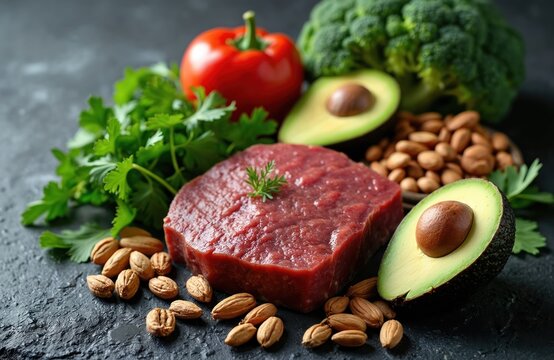
Eating more heme iron sources is one of the most effective ways to improve your iron levels. Heme iron, found only in animal-based iron rich foods, is more easily absorbed by the body compared to non-heme iron from plants.
Foods like red meat, liver, poultry, and seafood provide a highly bioavailable form of iron. For example, just 3 ounces of cooked beef liver can offer over 6 mg of iron, making it one of the most potent iron rich foods available.
Including these foods regularly in your diet ensures better iron absorption and helps prevent iron deficiency. Even small portions added to meals can significantly boost your iron intake, especially when combined with vegetables or grains. Prioritizing heme iron sources is particularly important for individuals with higher iron needs, such as menstruating women, athletes, or those recovering from illness.
Combine Heme and Non-Heme Iron
Combining heme and non-heme iron sources in one meal is a smart strategy to boost overall iron absorption. Heme iron, found in animal-based iron rich foods, enhances the absorption of non-heme iron from plant-based sources when eaten together.
For example, pairing grilled chicken (heme iron) with a spinach salad or lentil soup (non-heme iron) creates a balanced, iron-boosting meal. This combination allows your body to better absorb the iron from both sources, improving your nutrient intake.
This method is especially helpful for people who rely heavily on plant-based iron rich foods. By adding even a small portion of meat or seafood to meals with beans, tofu, or whole grains, you can significantly improve iron absorption and support overall health. It’s a simple dietary tweak with big benefits for maintaining optimal iron levels.
Limit Calcium-Rich Foods with Iron-Rich Meals
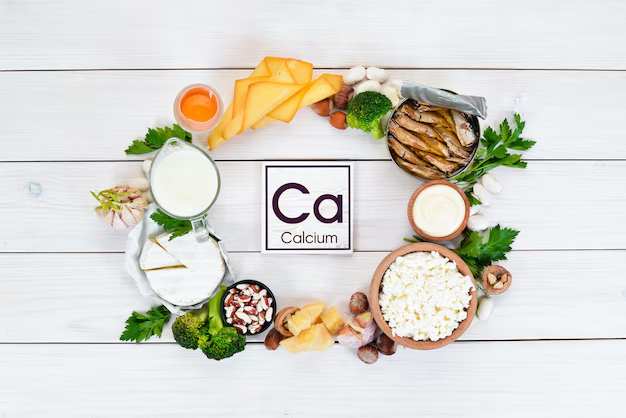
Calcium is an essential nutrient, but consuming high amounts during meals can interfere with iron absorption. This is especially important when eating iron rich foods, as calcium competes with iron for absorption in the digestive tract.
Dairy products like milk, cheese, and yogurt are common sources of calcium that may reduce the benefits of iron-rich meals. For example, pairing spinach or lentils with a glass of milk can limit how much iron your body absorbs from those iron rich foods.
To get the most from your iron-rich meals, try to separate calcium-rich foods and supplements from them by at least one to two hours. This simple timing adjustment allows your body to absorb more iron, especially from non-heme sources. Being mindful of this interaction can help improve iron status and prevent deficiencies over time, particularly in people with increased iron needs.
Use Iron-Fortified Foods
Iron-fortified foods are a convenient way to boost your daily iron intake, especially for individuals who may struggle to get enough from natural sources alone. These iron rich foods are enhanced during processing to contain additional iron, making them helpful in preventing deficiencies.
Common iron-fortified foods include breakfast cereals, breads, pasta, and some plant-based milk alternatives. Many of these options provide a significant portion—sometimes 100%—of the recommended daily iron intake per serving, making them excellent iron rich foods for busy lifestyles.
Including fortified foods in your diet is especially beneficial for vegetarians, children, and pregnant women who need more iron. When paired with vitamin C-rich fruits or juices, the iron in these fortified products becomes even more bioavailable. Relying on a mix of natural and fortified iron rich foods can help ensure you meet your daily nutritional needs effectively.
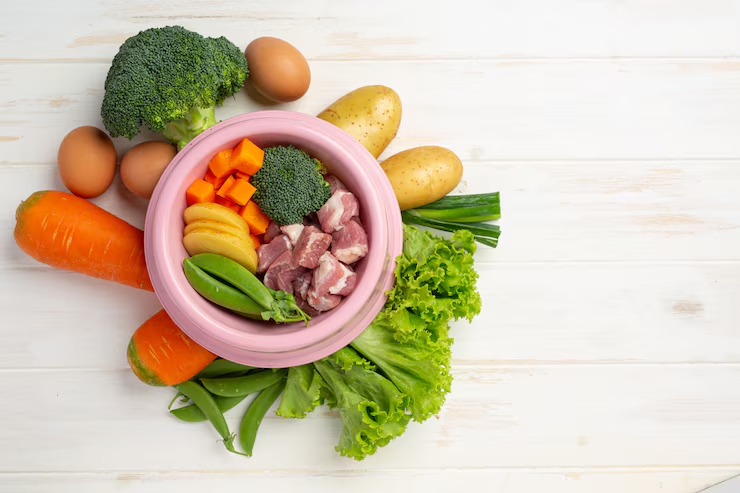
Be Mindful of Iron Inhibitors
Being mindful of iron inhibitors is important when planning meals with iron rich foods. Certain compounds in foods and drinks can interfere with iron absorption, especially non-heme iron from plant sources. These include polyphenols in tea and coffee, calcium in dairy, and phytates found in whole grains and legumes.
While these foods are healthy in general, their timing matters. For example, drinking tea immediately after eating lentils or spinach may reduce how much iron your body absorbs from these iron rich foods. Similarly, pairing iron-rich meals with high-calcium foods can lessen their benefits.
To get the most from your iron rich foods, try to space out the intake of known inhibitors by one to two hours. Simple changes—like enjoying tea between meals instead of with food—can make a big difference in maintaining healthy iron levels and preventing deficiency.
Iron Deficiency: Causes, Symptoms, and Risk Factors
Iron deficiency is the most widespread nutritional deficiency globally, impacting over 2 billion people. It is particularly common among women of childbearing age, pregnant women, infants, young children, vegetarians, vegans, and individuals with gastrointestinal conditions like celiac disease or Crohn’s. Frequent blood donors are also at higher risk due to regular iron loss.
Common symptoms of iron deficiency include extreme fatigue, weakness, pale or yellowish skin, dizziness, cold hands and feet, shortness of breath, chest pain, a rapid heartbeat, and restless legs syndrome. These signs often develop gradually and may be overlooked until they become severe.
If left untreated, iron deficiency can progress into iron-deficiency anemia, a serious condition that can impair heart function and weaken the immune system. Including a variety of iron rich foods—such as red meat, spinach, lentils, and fortified cereals—is essential to prevent and manage this condition effectively.
Diagnosis and Treatment
A simple blood test can measure:
Hemoglobin levels
Hematocrit
Ferritin (iron stores)
Transferrin saturation
Treatment usually involves dietary changes and, if needed, iron supplements. Always consult a healthcare provider before starting any iron supplementation, as excessive iron can cause toxicity and organ damage.

Iron Rich Foods Diet Plan
| Diet Type | Meal | Menu | Iron (mg) |
| Omnivore | Breakfast | Fortified cereal + orange juice | 8 mg |
| Lunch | Chicken salad with spinach and quinoa | 6 mg | |
| Dinner | Grilled beef with broccoli | 4 mg | |
| Total Iron | 18 mg | ||
| Vegetarian | Breakfast | Oatmeal with raisins and chia seeds | 5 mg |
| Lunch | Lentil soup with whole grain bread | 6 mg | |
| Dinner | Tofu stir-fry with kale and bell peppers | 7 mg | |
| Snack | Dark chocolate square + orange | 2 mg | |
| Total Iron | 18–20 mg | ||
| Vegan | Breakfast | Smoothie with spinach, orange, and chia seeds | 5 mg |
| Lunch | Chickpea curry with brown rice | 6 mg | |
| Dinner | Tempeh tacos with avocado, tomato, and lime | 7 mg | |
| Snack | Roasted pumpkin seeds and apple | 2 mg | |
| Total Iron | 18–20 mg |
Conclusion
Iron is an essential nutrient that plays a critical role in maintaining overall health by supporting the production of hemoglobin, a protein in red blood cells responsible for transporting oxygen throughout the body. Without enough iron, cells don’t receive the oxygen they need, leading to fatigue, weakness, and impaired cognitive function. This makes it especially important for children, women of childbearing age, and athletes to maintain adequate iron levels.
Including iron rich foods into your daily diet is the most effective way to prevent iron deficiency. These include both heme sources like red meat, poultry, and seafood, and non-heme sources such as lentils, spinach, tofu, and fortified cereals. While heme iron is more easily absorbed by the body, combining non-heme sources with vitamin C-rich foods can significantly boost absorption rates.
Choosing a variety of iron rich foods ensures your body gets the nutrients it needs for energy, immunity, and proper growth. Balanced nutrition not only prevents anemia but also enhances your overall vitality and well-being.

FAQs
- What are the best iron rich foods for vegetarians ?
Vegetarians can meet their iron needs by focusing on non-heme iron rich foods like lentils, chickpeas, tofu, quinoa, spinach, pumpkin seeds, and fortified cereals. Pairing these with vitamin C-rich foods (like oranges or tomatoes) can significantly boost absorption. - Can I get enough iron from iron rich foods without taking supplements ?
Yes, many people can meet their daily iron requirements through a well-balanced diet that includes a variety of iron rich foods. However, individuals with increased needs—such as pregnant women or those with anemia—may still require supplements under medical supervision. - Do iron rich foods help with fatigue ?
Absolutely. One of the most common symptoms of iron deficiency is fatigue. Consuming iron rich foods helps restore healthy hemoglobin levels, improving oxygen transport in the body and reducing tiredness. - Are there any side effects of eating too many iron rich foods ?
Eating a balanced amount of iron rich foods is safe for most people. However, overconsumption, especially alongside supplements, may lead to iron overload in rare cases. It’s best to monitor intake and consult with a doctor if you’re concerned. - How can I make sure my body absorbs more iron from iron rich foods ?
To enhance iron absorption, combine iron rich foods with vitamin C sources (like bell peppers, citrus fruits), avoid drinking tea or coffee with meals, and limit calcium-rich foods during iron-rich meals. Cooking in cast iron pans can also help boost iron content.
